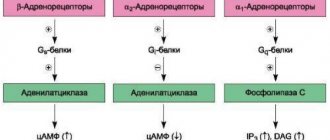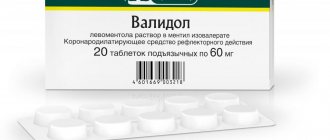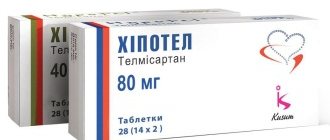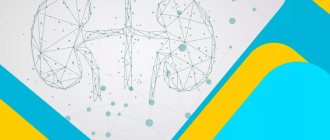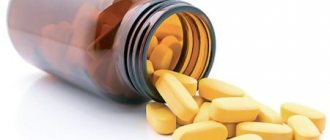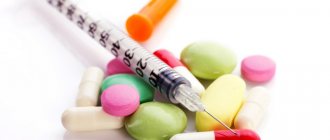Nootropics are neurometabolic stimulants that have a positive effect on complex psychophysiological processes. The mechanism of their action is associated with the restoration of the bioenergetic and metabolic functions of the neuron, as well as the neurotransmitter systems of the brain. The principle of operation of nootropic drugs, as their name suggests, is aimed at improving the functioning of the parts of the brain that are responsible for learning, memory, attention and other cognitive functions.
Nootropic drugs are drugs containing organic or synthetic active substances, as well as their derivatives, which stimulate the functioning of neurotransmitters. They are grouped into a pharmacotherapeutic group with the ATX code N06BX (“Other psychostimulants and nootropic drugs”).
The term nootropics was coined in 1972 by Romanian chemist, psychologist and Ph.D., Corneliu E. Giurgea, who first synthesized piracetam in 1964. Its therapeutic effect turned out to be the opposite of the chemist's expectations - characteristic of psychostimulants, without the occurrence of non-core actions. This effect still remains a mystery to scientists.
Nootropics used in medicine today are presented in the international drug classification system (Anatomical Therapeutic Chemical, ATC), adopted by the Ministry of Health of the Russian Federation in 2002. Other nootropic drugs are created for use within specific countries and are not introduced into the international market.
Indications for use
Neuroprotectors are recommended for use in cases of toxic or hypoxic encephalopathies, problems with falling asleep and waking up, during the rehabilitation period after a stroke, chronic fatigue syndrome, fatigue, and also:
- dizziness;
- loss of orientation in space;
- consequences of inflammatory processes in the central nervous system.
In children, drugs are used for speech delay, psychomotor development, poor learning ability, and cerebral palsy.
Treatment with neuroprotective agents is today considered the most promising direction in medical practice for brain hypoxia and impaired nutrition of neurocytes.
The peculiarity of medicines is the speed of effect and the duration of the achieved result. This is explained by the fact that the preparations contain a large number of amino acids and vitamins, which, in conjunction with neuropeptides, guarantee the desired result.
Groups of neuroprotectors by mechanism of action
Neuroprotective therapy in modern medicine plays an important role in the treatment of neurological diseases of various origins. They are distinguished by their structure and principle of operation. Among the common drugs are combination drugs (like Phezam), as well as:
- Nootropics.
- Vasoactive drugs - anticoagulants, antiplatelet agents, methylxanthines.
- Adaptogens.
- Antioxidants.
Good results are demonstrated by medications that bind free radicals. They are called antioxidants and are used to control the functioning of mitochondria. Thus, the cells begin to absorb oxygen better and are filled with energy.
The most famous and popular neuroprotective drugs of this group are vitamin E, that is, tocopherol, as well as traditional ascorbic acid. But, as has been established through numerous scientific tests, these substances are not able to provide the proper therapeutic effect due to their low adhesive ability to cell membranes.
High-quality neuroprotective therapy involves the use of tissue respiration correctors. This includes medications from different manufacturers. Highlight:
- coenzyme q10, riboflavin;
- cytochrome C, succinic acid and others.
According to scientists and medical experts, the best effect is achieved through combined tactics, when the attending physician prescribes a combination of tissue respiration correctors based on the patient’s age and gender. The presence of chronic pathologies and the clinical picture (the intensity of the manifestation of mental and physical symptoms) are also taken into account.
Neuroprotective therapy can be developed through the use of new medications that began to be used in medical practice relatively recently. They remove the excitotoxicity of glutamate and block the receptors that demonstrate the reaction due to the amino acid.
Reception features
When choosing medications, the doctor uses an individual approach to the patient, taking into account his physiological characteristics and the severity of the pathological condition.
To diagnose hemodynamic disorders, a complete clinical and laboratory examination and consultations with specialists are prescribed. In addition, constant monitoring of the effectiveness of the prescribed therapy is required, especially in the first few days from the date of prescription of the medications.
A distinctive feature of neuroprotectors is their maximum effectiveness when administered through a dropper, when the infusion lasts at least an hour. Intravenous and intramuscular administration of drugs, as well as the use of capsule and tablet forms for courses of up to six months, are also effective. It all depends on the diagnosis given to the patient and the degree of damage to neurocytes.
Nootropics for children, adults and the elderly
Currently, clinical studies of nootropics are being conducted in the USA and Europe to identify therapeutic effects that can be used to treat diseases in various fields of medicine. It should be emphasized that we can talk about nootropics with proven effectiveness only in terms of the positive mechanism of their action, recorded by both researchers and doctors in clinical practice.
For example, on February 12, 2010, data from a clinical study on the use of nootropics in the treatment of CNS pathologies was published in the USA (Malykh A., Sadaie R. “Piracetam and piracetam-like drugs: from basic science to novel clinical applications to CNS disorders”). The study demonstrated the neuroprotective effect of the substance, effectiveness in the treatment of cognitive disorders of cerebrovascular and traumatic etiology, as well as associated depressive states. In particular, the study notes the effectiveness of nootropics as part of complex therapy in the treatment of epilepsy.
Similar and other positive effects of using nootropics are noted in many modern clinical studies, the results of which are published in scientific journals and are publicly available on the Internet. In other words, nootropics with proven effectiveness exist, they are presented on the pharmaceutical market, and are actively prescribed by doctors in various fields of medicine, but the final decoding of the therapeutic mechanism of drugs in this group has yet to be learned.
Nootropics for children
Nootropics are used in the treatment of various diseases associated with central nervous system pathology in children. In the first years of a child’s life, they can be prescribed for the prevention and treatment of delayed psycho-speech-motor development; at a later age - to stimulate the activity of the central nervous system systems responsible for concentration, the learning process, memory, and the ability to reproduce information.
Nootropics for children include drugs with dominant or predominant mnestic effects (“true” nootropics):
- racetams;
- cholinesterase drugs;
- neuropeptides and their analogues;
- amino acid activators;
- neuroprotectors;
- activators of brain metabolism;
- cerebral vasodilators;
- calcium antagonists;
- antioxidants;
- GABA activators.
Indications for prescribing nootropics for children are:
- delayed speech development;
- impaired mental function;
- cognitive impairment due to organic brain damage (consequences of neuroinfections, head injury, genetic pathology);
- mental retardation;
- ADHD;
- Parkinson's disease;
- neurogenic urination disorders;
- neurosis-like conditions;
- stuttering, predominantly clonic;
- asthenic and anxiety-neurotic conditions;
- epilepsy (in complex therapy).
Nootropics for adults
Biological therapy for mild, borderline and severe mental disorders may include nootropic drugs. They are prescribed for the occurrence of pathological conditions associated with cognitive functions, mood and sleep. For example, they have a positive effect on the psycho-emotional state and personal effectiveness as an addition to psychotherapeutic treatment, and accelerate the achievement of the desired result.
Nootropics for adults used in mono- and complex therapy of mental disorders:
- pyrrolidone derivatives (Nootropil - note, for example, and further);
- cyclic derivatives, GABA (Pantogam, Phenibut, Aminalon);
- acetylcholine precursors (Deanol);
- pyridoxine derivatives (Pyritinol);
- Devincan derivatives (Vincamine, Vinpocetine);
- neuropeptides (Vasopressin, Oxytocin, Thyroliberin, Cholecystokinin);
- antioxidants (Ionol, Mexidol, Tocopherol).
The above nootropics are prescribed for mental disorders arising from vascular diseases of the brain (F00-F09, “Organic, including symptomatic, mental disorders”):
- exogenous-organic mental disorders;
- transient psychotic disorders;
- persistent mental disorders;
- psychoorganic disorders;
- vascular dementia.
Nootropics for older people
Neuroprotective nootropic therapy for older people is prescribed for Alzheimer's disease, Pick's disease, as well as syndromes including confusion, instability of attention, confusion, disorientation in space and time, memory problems, fragmented thinking, emotional imbalance, fear, anxiety, motor agitation or lethargy, deceptions of perception, sleep disturbances.
Rice. 4. Structure of the nervous system
Classification
Neuroprotective drugs belong to different pharmacological groups. There are 5 types of drugs with neuroprotective properties:
- nootropics
– correctors of metabolism and neuropsychic pathologies, activate memory; - antioxidants
– remove free radicals, rejuvenating every cell, balancing redox reactions in the body; - vascular (cerebrovascular or cerebroprotectors)
drugs are divided into several subclasses: anticoagulants and antiplatelet agents - control blood viscosity, prevent the formation of blood clots, calcium antagonists - restore heart rhythm, reduce the load on the myocardium, pulmonary artery, control regional blood flow; - adaptogens
- help brain neurons adapt to the proposed conditions; - combined
(mixed type) drugs perform the entire complex of the listed tasks.
Neuroprotectors are prescribed by a doctor who selects the drug in accordance with the minimum side effects, maximum efficiency, and calculates the required dose.
Clinical use of nootropics
Psychiatrists and psychotherapists can prescribe nootropic drugs either as monotherapy or in combination with other psychotropic drugs. For example, nootropics are prescribed for the treatment of neuroses, attention deficit hyperactivity disorder (ADHD), depressive disorders and other mood disorders, and schizophrenia.
The purpose of prescribing nootropic drugs is to restore the cognitive functions of the brain responsible for the processes of interaction with received information, in particular:
- perception (information, - approx., etc.);
- processing;
- analysis;
- memorization;
- storage;
- correlations;
- conclusions.
Nootropic drugs are also used in other areas of clinical medicine. For example, in pediatrics, where nootropics help restore amino acid deficiency that disrupts protein biosynthesis in the body and metabolic processes in general. In particular, a doctor can prescribe nootropics for children with signs of delayed speech and mental development, mental retardation, and the consequences of perinatal damage to the central nervous system. Doctors of other specializations (speech therapists, neurologists, endocrinologists, gynecologists, urologists, ophthalmologists) can prescribe nootropics depending on the symptoms, including in complex therapy, for various diseases and conditions:
- neuroleptic syndrome;
- stuttering, logoneurosis;
- hyperkinesis, dyskinesia;
- urinary disorders;
- insomnia and other sleep disorders;
- headaches of various etiologies;
- dizziness;
- seasickness;
- open-angle glaucoma;
- vascular diseases of the retina;
- macular diseases;
- diabetic retinopathy;
- Alzheimer's disease;
- Parkinson's disease;
- Huntington's disease;
- with the consequences of TBI.
In other words, the range of use of nootropic drugs is wide and is not limited only to mental disorders. The gentle therapeutic mechanism of drugs in this group allows nootropics to be prescribed to newborns and infants, as well as the elderly. It is also important that nootropic drugs are included in the List of vital and essential drugs for medical use.
Characteristics of drugs of different groups
The quality of human life is correlated with brain function. Over time, neurocytes age, which means we need drugs that can support brain cells and slow down their decline. This is precisely the problem that neuroprotectors solve; every year there are more and more drugs on the pharmacological market.
The main task of neuroprotectors is to protect brain cells from various types of influences and damage. The work of all medicines is aimed at solving this issue, and each group of drugs has its own characteristics, treatment regimen, dosage, and method of administration.
Nootropics
Nootropic drugs are a whole group of medications that support neurocytes in negative conditions.
The drugs are recommended for use in short courses; in exceptional cases, long-term use is possible under the control of laboratory parameters (therapy effectiveness). The therapeutic effect is based on:
- the ability to activate the synthesis of mediators that carry out nerve impulses along nerve fibers;
- stimulation of regenerative processes;
- restoration of gas exchange, correction of hypoxia;
- restoration of memory and cognitive abilities.
High doses cause many side effects. The presence of brain tumors is an absolute contraindication for use.
Cerebrolysin
The most popular drug in the group of nootropics is Cerebrolysin, a neuropeptide of natural origin (extract from the pig brain) with primary and secondary neuroprotection.
Cerebrolysin neutralizes the effect of harmful amino acids on neurons and prevents damage due to hypoxia. The rate of penetration into the brain is high, it is administered parenterally, in courses of at least 10 days, in the treatment of stroke, meningitis, encephalitis, multiple sclerosis, and Alzheimer's disease. Cost – 996 rubles.
Piracetam
Piracetam is one of the first nootropics created, which has not lost its relevance today, provided that high doses of the drug are prescribed. Piracetam normalizes metabolism, prevents hypoxia and neuronal ischemia. Available in capsules and injections, it is effective in cases of impaired concentration, brain injuries, Alzheimer's disease, chronic alcoholism, and in the rehabilitation period after a stroke. In children it is prescribed for learning problems. Price – 25 rubles.
Identical in composition, analogues of Piracetam: Nootropil (239 rubles), Memotropil (258), Lucetam (72).
Cerakson
Ceraxon is a neuroprotector, has the ability to restore cell membranes, therefore it is prescribed for brain injuries of any nature, strokes of various origins.
Stopping the medication occurs gradually until the condition returns to normal. For secondary prevention, other drugs are used. Cost – 574 rubles.
Picamilon
Picamilon is an inexpensive but effective nootropic that improves blood circulation and eliminates fatigue. Produced in the form of injections and tablets, prescribed parenterally for the treatment of: asthenia; VSD, migraine, traumatic brain injury, enuresis, stress, emotional overexcitation, neuroinfections, visual impairment, to relieve alcohol intoxication; in order to restore functionality. Price – 85 rubles.
Complete analogues of Picamilon are the following drugs: Pikogam (70 rubles), Picanoyl (3858), Amylonosar (84).
Actovegin
Actovegin is a neuroprotector based on calf blood with a wide spectrum of action due to the ability of the drug to saturate any cells of the body with glucose and oxygen.
It is prescribed as a neuroprotector for strokes, discirculatory encephalopathies, and brain injuries. It is administered parenterally, taken in tablet form. Price – 549 rubles.
Cortexin
The nootropic Cortexin is a complex of protein fractions isolated from the brain of pigs and cattle. It is a neuroprotector with excellent tolerability.
The drug is approved for use by adults and children in courses of 10 days. The downside is the fact that Cortexin is administered only intramuscularly (there are no other forms of release yet). Cost – 766 rubles.
Fenotropil
Phenotropil is a neuroprotector with an almost immediate effect, the effect is felt after a single dose. The ability to remember, concentrate, and speed of thinking accelerates. The drug improves mood and increases the body's resistance to stress. There are currently no complete analogues of the drug. Cost – 455 rubles.
Encephabol
Encephabol is a neuroprotector approved for use from birth (suspension). Prescribed for the treatment of memory impairment, mental retardation, dementia syndrome, and pathological thinking.
The result is achieved with long-term use. Take in the morning (provokes insomnia). Doses and regimen are individual. Side effects are extremely rare. Price – 859 rubles.
Gliatilin
Gliatilin is a precursor to the neurotransmitter acetylcholine and phospholipids that make up cell membranes. The drug is indicated for the treatment of acute conditions (stroke, trauma) and chronic processes: encephalopathy, cognitive dysfunction. Price – 517 rubles. Complete analogues of Gliatilin are Cereton and Cerepro (265 rubles).
Nootropic drugs in geriatric practice
U
The increase in the planet's elderly population in recent years due to increasing life expectancy entails an increase in the frequency of neurological diseases developing in old age. The most common among these diseases are neurodegenerative dementias and cognitive impairment associated with cerebrovascular diseases (dyscirculatory encephalopathy).
In the pathogenesis of these diseases, the main role is given to mechanisms such as chronic cerebral ischemia as a result of exposure to various factors, programmed cell death or apoptosis [7], and neuronal degeneration. Recently, increasing attention has been paid to the concept of mixed dementia, according to which both neurodegenerative and ischemic components are present in the development of vascular and neurodegenerative cognitive impairment. Thus, in Alzheimer's disease (AD), concomitant vascular pathology leads to the formation of more severe cognitive deficits and intensification of the degenerative process. In dyscirculatory encephalopathy or vascular dementia, ischemia, in turn, leads to disruption of the functioning of neurons, which can result in neuronal degeneration. Thus, cognitive impairments in the elderly and senile age are realized as a result of a combination of mechanisms that disrupt the metabolism and vital activity of the neuron [2,5,16,18], and one of the ways to treat them may be to reduce the severity of these metabolic cerebral disorders.
Currently, great importance is attached to the use in therapeutic practice for various diseases of the nervous system of nootropic drugs [1,2,4,6,8,10–12,16,21,23], which affect metabolism in various structures that have vasoactive and antihypoxic effect. The modern classification of substances with nootropic effects can be presented as follows.
Classification of substances with nootropic effects
(T.A. Voronina, S.B. Seredenin, 1998) [4].
1. Nootropic drugs with a dominant mnestic effect.
1.1. Pyrrolidone nootropic drugs (racetams), predominantly of metabolic action (piracetam, oxiracetam, aniracetam, etiracetam, isocetam, etc.).
1.2. Cholinesterase drugs.
1.2.1. Strengthening the synthesis of acetylcholine and its release (choline chloride, phosphotidyl-serine, lecithin, acetyl-L-carnitine, etc.).
1.2.2. Agonists of cholinergic receptors (oxotremorine, bethanechol, spiropiperidines, etc.).
1.2.3. Acetylcholinesterase inhibitors (physostigmine, tacrine, amiridine, galantamine, ertastigmine, etc.).
1.2.4. Substances with a mixed mechanism of action (demanol, aceglutamate, nerve growth factor, bifemalan, etc.).
1.3. Neuropeptides and their analogs (ACTH, ebiratide, somatostatin, vasopressin, thyrotropin-releasing hormone, substance P, angiotensin II, cholecystokinin 8, peptide analogues of piracetam, etc.).
1.4. Substances that affect the system of excitatory amino acids (glutamic acid, memantine, milacemide, glycine, D-cycloserine, nooglutyl).
2. Nootropic drugs of mixed action with a wide range of effects (“neuroprotectors”)
.
2.1. Activators of brain metabolism (actovegin, instenon, acetyl-L-carnitine, phosphatidylserine, homopantothenic acid esters, xanthine derivatives, etc.).
2.2. Cerebral vasodilators (vinpocetine, oxybral, nicergoline, vinconate, etc.).
2.3. Calcium antagonists (nimodipine, cinnarizine, flunarizine, etc.).
2.4. Antioxidants (mexidol, exiphon, pyritinol, atherovit, meclofenoxate, tocopherol).
2.5. Substances affecting the GABA system (gammalon, pantogam, picamilon, ligam, nicotinamide, phenibut, phenotropil, sodium hydroxybutyrate, neurobutal, etc.).
2.6. Substances from different groups (ethimizole, orotic acid, methyl glucoorotate, oxymetacyl, beglimin, cerebrocrast, ginseng, instenon, gingko biloba extract, lemongrass, etc.).
Thus, the class of nootropic drugs can include drugs of various pharmacotherapeutic groups that in one way or another affect the metabolism of neurons or hypothetically have a neuroprotective effect. Below we will examine in more detail the mechanisms of action of the most commonly used nootropic drugs in neurological practice.
Pyrrolidone drugs have predominantly metabolic effects
These drugs are most widely known as “nootropics”, since this class includes the drug piracetam, the positive metabolic effect of which on the central nervous system was one of the first to be shown. Pharmacotherapeutic drugs based on the chemical structure of the pyrrolidone ring, which is very similar in chemical structure to g-aminobutyric acid (GABA), have a positive effect on the central nervous system through a number of mechanisms. Thus, a direct effect on energy processes in a neuron by increasing the activity of adenylate cyclase and inhibiting nucleotide phosphatase leads to an intensification of the ATP cycle and thereby normalizes cellular metabolism, which, under conditions of ischemia or neuronal degeneration, is usually significantly reduced. Drugs in this group also stimulate redox processes, increase the utilization of glucose by neurons and have a positive effect on regional cerebral blood flow by reducing the degree of platelet aggregation. The combined effect on cellular metabolism and cerebral blood flow leads to a positive effect of drugs of this group in relation to cognitive functions [1,2,5,6,8,10, 12,20,23]. Thus, one of the therapeutic effects as a result of long-term use of piracetam and its analogues is the improvement of interhemispheric information transfer, which may explain the positive effect of drugs of this pharmacotherapeutic group in relation to speech disorders, in particular, those resulting from a stroke suffered by the patient. Piracetam and its analogues enhance cortico-subcortical impulses, which may result in a decrease in the severity of neurodynamic disorders, impaired attention and an increase in the actual integrative cognitive functions. The mild psychotropic effect of drugs of this pharmacotherapeutic group can also make a positive contribution to improving attention, memory and integrative cerebral processes. The effect of these drugs on the vestibular system is important due to their impact on the mechanisms of signal transmission from sources of visual and proprioceptive sensitivity or a direct effect on the vestibular nuclei of the brain stem. This effect seems to be extremely important in the treatment of discirculatory encephalopathy, including those with predominant suffering of the vertebrobasilar region, and in the treatment of conditions in the clinical picture of which brain stem disorders (in particular, traumatic brain injury) occupy the main place.
In clinical practice, drugs of this pharmacotherapeutic group are used in the recovery period after stroke and traumatic brain injury, in dyscirculatory encephalopathy, post-hypoxic conditions, chronic alcohol or drug intoxication [1,5,11]. Until recently, attempts were made to use piracetam and its analogues in the treatment of degenerative dementia. Unfortunately, most of the placebo-controlled clinical trials have not shown a significant positive effect of piracetam and similar drugs on cognitive impairment and the rate of its progression in AD and other neurodegenerative dementias [5,8,23].
The new generation of drugs of this pharmacotherapeutic group is represented mainly by combination drugs
, the structure of which combines a nootropic and vasoactive substance. Vasoactive drugs, reducing the resistance of cerebral vessels, cause an increase in both total hemispheric and regional blood flow. This promotes better oxygenation of the brain, normalization of metabolic processes and improvement of the condition of patients. When using vasoactive drugs, the correct choice of drug is of great importance. Thus, these drugs (especially in large doses), along with the dilation of cerebral vessels, can significantly reduce total peripheral resistance and reduce systemic blood pressure, which in conditions of chronic cerebral circulatory failure can lead to the progression of ischemic damage to brain tissue. Therefore, to correct cerebral vascular disorders, it is desirable to use drugs that, in therapeutic doses, do not affect central hemodynamic parameters.
One of the drugs that is a combination of nootropic and vasoactive substances is Phezam
. This is a combination drug containing 400 mg of piracetam and 25 mg of cinnarizine. The combination of these components enhances the antihypoxic effect and reduces the tone of the smooth muscles of the brain vessels. Phezam has moderate antiplatelet activity, stimulates metabolic processes in the central nervous system, increases the integrative abilities of the brain, improves memory, and facilitates the learning process. This drug is successfully used for chronic cerebral circulatory failure caused by atherosclerosis of cerebral vessels or a stroke, brain injury, alcohol or drug intoxication, as well as for disorders of memory, concentration and functions of the vestibular apparatus.
This drug is prescribed with caution to people suffering from liver and kidney diseases.
The drug is not used in patients with parkinsonism. Because the dyes in the tablet coating contain iodine, the results of studies using radioactive iodine may be distorted.
When prescribing treatment with Phezam, it is imperative to focus the patient’s attention on the fact that when taken simultaneously, it is possible to enhance the sedative effect of drugs that depress the central nervous system, tricyclic antidepressants and alcohol, as well as nootropic and antihypertensive drugs. Vasodilators enhance the effect of the drug, and hypertensive drugs weaken it.
Fezam is ideal in cases where the use of piracetam alone causes tension and insomnia in the patient.
When Phezam is used in recommended doses, it is possible to drive vehicles and operate machinery. This benefit is especially important for the working patient population.
Fezam is recommended for adults to take 1-2 capsules 3 times a day, for children – 1-2 times a day. The duration of use is determined individually and is 1.5–3 months.
Cholinesterase drugs
Acetylcholine deficiency underlies cognitive impairment of both neurodegenerative and vascular nature. Cholinergic drugs are currently the main pharmacotherapeutic group used for the symptomatic treatment of asthma [2,5,8,9,21]. It should be noted that these drugs in the early stages of the disease can also have a pathogenetic effect, since the initial death of neurons in the basal nucleus of Meynert and the accompanying cholinergic deficiency lead to deafferentation degeneration of neurons in the temporo-parietal-occipital cortex. A possible neuroprotective effect of these drugs is also suggested, since they may have an indirect effect on amyloidogenesis [11,15].
Today in the treatment of asthma they use
mainly
cholinesterase inhibitors
. The latest generation of these drugs has a prolonged effect and can be prescribed once (donepezil) or twice (rivastigmine, galantamine) once a day.
One of the modern cholinergic drugs for the treatment of asthma is rivastigmine.
[21]. The action of the drug is carried out through the blockade of acetylcholinesterase and butyrylcholinesterase - enzymes that destroy acetylcholine in the synaptic space. The half-life of the drug is about 12 hours, so it can be administered twice a day.
When starting treatment with rivastigmine, the dose of the drug should be increased gradually to ensure better tolerability of the drug. The standard regimen is to increase the dose of rivastigmine by 3 mg per day every two weeks. The minimum daily dose is 3 mg, the maximum is 12 mg. As a rule, the dose of the drug is increased until it is well tolerated by patients. The most common adverse reactions are nausea and vomiting. These reactions are caused directly by the cholinergic effect of the drug, although they may also have a central genesis. The drug is metabolized by the liver and has some hepatotoxic effects, which is why when treating with rivastigmine it is necessary to control the level of hepatic transaminases in the blood.
Treatment with rivastigmine, like other cholinergic drugs, should be carried out continuously, since sudden withdrawal of the drug can lead to a sharp increase in cognitive deficit. It should be noted that the positive effect of the drug, despite the progression of the disease, persists for quite a long time.
However, not all asthma patients respond to treatment with rivastigmine. On average, a therapeutic effect is observed in 40–50% of patients. Perhaps the lack of effect from prescribing cholinergic drugs is due to the genetic heterogeneity of asthma. In any case, the range of symptoms that can be reliably treated with cholinergic drugs in asthma has yet to be delineated.
Rivastigmine may be effective not only for asthma. In particular, with vascular dementia, long-term use of this drug (12 months or more) also shows a positive effect in the form of a decrease in the severity of cognitive impairment. Some researchers indicate that rivastigmine, in addition to its cholinergic effect, may also have a metabolic effect as a result of an increase in cerebral blood flow in the frontal, temporal and occipital regions [22]. Thus, it can be assumed that rivastigmine has a positive effect on cerebral circulation and, accordingly, can be used for cognitive impairment that develops as a result of cerebral dyscirculation.
Activators of cerebral metabolism
The main property of these drugs is an increase in neuronal metabolism under conditions unfavorable for cellular activity
.
Drugs that activate cerebral metabolism increase neuron survival under ischemic conditions, enhance the utilization of glucose by cells and, accordingly, can have a beneficial effect on both the severity of cognitive impairment and the rate of disease progression. This class of nootropics includes drugs from various pharmacotherapeutic groups. The most commonly used activators of cerebral metabolism are Actovegin, Instenon, Cerebrolysin
. Instenon is a combined drug consisting of vascular (etaphylline) and neurotropic (hexabindin) components; it also contains etamivan, which supposedly has an activating effect on nonspecific cerebral systems [2,6,11]. When taking this drug, there is an increase in the transport and consumption of glucose and oxygen by cerebral neurons due to stimulation of anaerobic oxidation, activation of microcirculation and cerebral circulation. The drug does not have a significant effect on systemic hemodynamic parameters, which is its undoubted advantage.
Actovegin is an oligopeptide drug containing nucleic acid derivatives, oligosaccharides and microelements. The mechanism of action of Actovegin is to improve aerobic glycolysis by increasing the supply and utilization of glucose and oxygen [5,6,12]. This leads to activation of Krebs cycle enzymes, acceleration of lactate breakdown, prevention of the development of lactic acidosis, stimulation of ATP formation, normalization of energy metabolism in conditions of its deficiency, improvement of metabolism and cell activity. Cerebrolysin is also a peptide drug and has a mechanism of action similar to Actovegin.
Drugs that are activators of cerebral metabolism are used in the treatment of acute and chronic cerebrovascular diseases, traumatic brain injuries, as well as for peripheral circulatory disorders. Currently, their effectiveness in dyscirculatory encephalopathy has been convincingly demonstrated [2,5,10]. Unfortunately, the results of most clinical trials conducted indicate that these drugs do not have a significant effect on the severity and rate of progression of cognitive impairment in degenerative dementias, in particular in AD [5,8,16].
Calcium channel blockers
Calcium channel blockers exert their action directly through the stabilization of cell membranes. As is known, under conditions of apoptosis or cerebral hypoxia, activation of glutamate leads to subsequent stimulation of NMDA receptors, opening of calcium channels and increased calcium entry into the neuron [7]. The resulting membrane charge inversion leads to membrane depolarization and subsequent cell death. Thus, drugs that block calcium neuronal receptors should increase the resistance of neurons to hypoxia and promote the survival of the neuronal population both in vascular and metabolic, as well as in neurodegenerative processes [6,12]. A number of clinical studies have shown the effectiveness of these drugs in dyscirculatory encephalopathy [6]. There is evidence of the positive effect of these drugs in neurodegenerative dementia [11]. It should be noted that these results are not confirmed by all researchers: a number of clinical trials have not shown any positive effect on cognitive functions in both vascular and neurodegenerative cognitive disorders [2,5,8,12,23] . Undoubtedly, the supposed nootropic effect of calcium channel blockers needs further research and confirmation.
Drugs that have a neuroprotective effect
Currently, attempts are being made to use drugs from a wide variety of pharmacotherapeutic groups in the treatment of cognitive impairment, presumably having a neuroprotective effect. Thus, the neuroprotective effect of estrogens is discussed
. The results of clinical trials have shown that estrogen treatment can be effective both in cognitive impairment that has developed as a result of neurodegenerative pathology, and in cognitive impairment of vascular origin. Moreover, in the first case, a slowdown in the progression of the disease may be observed [11], while in the second, a positive effect is realized as a result of a decrease in the severity of hyperlipidemia. Clinical trials evaluating the effectiveness of tocopherol, selegiline and ginkgo biloba preparations have shown that these drugs can also have some effect on the severity of cognitive impairment in AD and dyscirculatory encephalopathy [5]. However, in AD, this effect is not so pronounced and we have to talk not about the treatment of cognitive impairment, but only about a slight slowdown in the progression of the disease. There is data on the use of Cerebrolysin in high doses (20–30 ml intravenously, 20–40 injections), according to which this therapy can reduce the severity of cognitive impairment both in AD and in cognitive impairment of vascular origin [10]. It is assumed that Cerebrolysin, along with systemic metabolic and antioxidant effects, also has a neuroprotective effect and helps reduce amyloidogenesis [10].
, NMDA receptor antagonists are actively used in the treatment of cognitive impairment in the elderly.
[3,8,9,13,14,17,19]. In addition to the direct effect on NMDA receptors and, accordingly, slowing the progression of cognitive impairment as a result of inhibition of the mechanism of apoptosis or programmed cell death [7], drugs of this group interact with various mediator systems of the brain, which also manifests a positive effect on cognitive functions. This feature, namely the effect of NMDA receptor antagonists on the metabolism of acetylcholine, norepinephrine and dopamine, seems to be the most interesting. Thus, an increase in the level of cerebral acetylcholine is directly related to a decrease in the severity of memory, speech and attention disorders, while a positive effect on dopaminergic systems can lead to a decrease in the severity of neurodynamic functions and intellectual impairment. The complexity of the action of drugs of this pharmacotherapeutic group suggests that they can be effective in cognitive impairment of both vascular and neurodegenerative etiology.
The second aspect of the therapeutic activity of NMDA receptor antagonists is their neuroprotective effect [8,17]. This effect is a direct result of blockade of NMDA receptors, closure of ionotrophic channels and, accordingly, stabilization of the cell membrane, which protects cells from death. Preventive administration of drugs of this pharmacotherapeutic group in the experiment reduced the ischemic penumbra zone, the severity of cerebral edema, and also reduced the area of the ischemic focus itself [13]. A similar result was obtained in other models of brain damage.
Thus, the range of drugs with nootropic effects is quite wide.
It should be emphasized once again that the greatest effectiveness of these drugs is observed in mild cognitive impairment, mainly of vascular origin. Despite the abundance of nootropic drugs, the treatment of vascular dementia seems more complex. Cognitive impairment in neurodegenerative dementias in some cases respond positively to treatment with cholinergic drugs and NMDA receptor antagonists. The use of drugs from other pharmacotherapeutic groups for neurodegenerative dementia, as a rule, does not give the desired result. Literature:
1. A.S. Avedisova, R.V. Akhapkin, V.I. Akhapkina, et al. – Analysis of foreign studies of nootropic drugs (using the example of piracetam). – Russian Psychiatric Journal. – 2001. – No. 1. – P. 57–63.
2. I.V. Damulin. Alzheimer's disease and vascular dementia. – Moscow, 2002. – 85 p.
3. I.V. Damulin. New neuroprotective and therapeutic strategy for dementia: NMDA receptor antagonist Akatinol Memantine. – Russian. honey. magazine –2001. –T.9, No. 25. –pp.1178–1182.
4. N.N. Zavadenko. – Nootropic drugs in the practice of pediatricians and pediatric neurologists. Guidelines. – RKI Sovero-press. - Moscow. – 2003 – 25 p.
5. V.V. Zakharov, N.N. Yakhno. – Memory impairment. - Moscow. – Geotar-Med. – 2003. – 158 p.
6. S.V. Kotov, E.V. Isakova, A.A. Ryabtseva et al. – Complex therapy of chronic cerebral ischemia. - Moscow. – RKI Sovero-press. – 2001. – 96 p.
7. Korshunov A.M., Preobrazhenskaya I.S. Programmed cell death (apoptosis) // Neurological Journal. – 1998. – N. 1. – pp. 40–47.
8. I.S. Preobrazhenskaya, N.N. Yakhno. Alzheimer's disease: pathogenesis, clinical picture, treatment. – Russian medical journal. – 2002. – T. 10. – No. 25. – P. 1143–1147.
9. N.N. Yakhno, I.V. Damulin, I.S. Preobrazhenskaya, E.A. Mkhitaryan. – Alzheimer's disease and dementia with Lewy bodies: some aspects of the clinic, diagnosis and treatment. – Russian medical journal. – 2003. – T.11. – No. 10. – p. 567–570.
10. Alvarez XA, Ruether E., Moessler H.. Efficacy of cerebrolysin in moderate to moderately severe Alzheimer's disease. In: Research and practice in Alzheimer's disease. – Volume 5. – Serdi Publishing (Paris). – Springer Publishing Company (NY). – 2001. – P. 179–186.
11. Brodaty H., Sachdev PS. Drugs for the prevention and treatment of Alzheimer's disease./Med. J. Aust. – 1997. – V. 167. – P. 8. – P. 447–449, 452.
12. Bullock R. New drugs for Alzheimer's disease and other dementias./Br. J. Psychiatry. – 2002. – V. 180. – P. 135–139.
13. Danysz W., Parsons CG, Quack G.. NMDA channel blockers: memantine and amino–alkylcyclohexanes – in vitro characterization./Amino Acids. – 2000 – V. 19. – P. 167–172.
14. Dogan A., Eras MA, Raghavendra Rao VA, et al. Protective effects of memantine against ischemia–reperfusion injury in spontaneously hypertensive rats. / Acta Neurochir. (Wien). – 1999. – V. 141. – P. 1107–1113.
15. Francis PT, Palmer AM, Snape M., Wilcock GK The cholinergic hypothesis of Alzheimer's disease: a review of progress. //J. Neurol. Neurosurg. Psychiat. –1999. –Vol.66. –P.137–147.
16. Grundman M.. Current therapeutic advances in Alzheimer's disease. In: Research and practice in Alzheimer's disease. – Volume 5. – Serdi Publishing (Paris). – Springer Publishing Company (NY). – 2001. – P. 172–177.
17. Marvanova M., Lakso M., Pirhonen J., et al. E.
The neuroprotective agent memantine induces brain–derived neurotrophic factor and trkB receptor expression in rat brain./Mol. Cel. Neurosci. – 2001. – V. 18. – N. 3. – P. 247–258.
18. Perlick D., Mattis S./Neuropsychological assessment in chronic care settings: potential utility and special considerations for evaluating dementia in the elderly.//Alzheimer Dis. Assoc. Discord. – 1994. – V. 8. – Suppl 1. – S 209–213.
19. Sahin K., Stoeffler A., Furtuna P. et al. Dementia severity and the magnitude of cognitive benefit by memantine treatment. A subgroup analysis of two placebo–controlled clinical trials in vascular dementia. //Neurobiol. Aging. –2000. –Vol.21. –P.S27.
20. Small BJ, Fratiglioni L, Viitanen M et al. Time course of preclinical cognitive deficits in Alzheimer's disease. In: Research and practice in Alzheimer's disease. – Volume 5. – Serdi Publishing (Paris). – Springer Publishing Company (NY). – 2001. – P. 29–34.
21. Vellas B., Messina J., Hartman R., et al. Multi–dimensionality of treatment benefits in Alzheimer's disease: investigating the correlation between activities of daily living and cognition in patients treated with rivastigmine. In: Research and practice in Alzheimer's disease. – Volume 5. – Serdi Publishing (Paris). – Springer Publishing Company (NY). – 2001. – P. 193–204.
22. Venneri A, Shanks MF, Staff RT, et al. Cerebral blood flow and cognitive responses to rivastigmine treatment in Alzheimer's disease./Neuroreport. – 2002. – V. 13. – N. 1. – P. 83–87.
23. Wilkinson D. Drugs for treatment of Alzheimer's disease./Int. J. Clin. Pract. – 2001. – V. 55. – N. 2. – P. 129–134.
Herbal preparations
Herbal remedies can be used as background or adjuvant agents for the treatment of pathological conditions requiring neurocorrection of neuronal metabolism.
An exception can be considered (with major reservations) - ginkgo biloba. Herbal medicines based on it: Ginkoum (262 rubles), Memoplant (490 rubles), Bilobil (149 rubles), Tanakan (518 rubles) have excellent tolerability due to their naturalness, but are not used as monotherapy in the treatment of brain hypoxia.
The only exception can be the prescription of phytoneuroprotectors to pregnant women on the recommendation of a doctor. The effect of such drugs is a simultaneous neuroprotective effect in combination with an improvement in blood flow to the extremities and the rheological properties of blood, which is recorded during long-term (at least six months) treatment.
Features and principles of therapy
According to its concept, neuroprotection has several directions:
- Primary, where the effect is aimed at interrupting the rapid mechanisms that contribute to cell death. This is problematic to implement due to the selective nature and the importance of accurately detecting the receptor that is involved in the process.
- Secondary, aimed at reducing the severity of the consequences of ischemic damage.
Neuroprotective therapy is used not only for acute conditions associated with brain function. In this way, chronic diseases of the nervous system are also treated. Neuroprotection is prescribed for:
- vegetative-vascular dystonia;
- neuroses;
- encephalopathy;
- depressive disorders;
- asthenia;
- neuroinfections.
The scheme for a specific patient is formed individually. An anamnesis is collected and the clinical picture is studied in detail. The course also depends on the general health of the patient.
Literature
- Batysheva T.T., Kostenko E.V., Zaitsev K.A. Experience in organizing the work of clinical neuropsychology rooms in the district neurological departments of the Moscow outpatient neurological service. Zh. Neurology and Psychiatry named after. S.S. Korsakova 2, 2009.
- Boyko A.N., Batysheva T.T., Matvievskaya O.V. et al. Features of the formation of chronic fatigue syndrome and approaches to its treatment in young patients with focal brain damage. //AND. neurology and psychiatry named after. S.S. Korsakova 2006.
- Boyko A.N., Batysheva T.T., Vinetsky Y.Ya. and others. Experience of using cortexin in outpatient neurological practice in patients with chronic cerebrovascular disorders // Journal. neurology and psychiatry.2006.
- Buldakova NU, Mugutdinova BT, Ovcharov VV, et al. Diagnosis and treatment of cognitive impairment in multiple sclerosis. Consilium medicum 2007.
- Strine TW, Chapman DJ, Kobau R. et al. Assoc of self–reported anxiety symptoms with health–I quality of life and health behaviors. Soc Psychiatr Epidemiol 2005.
The effectiveness of nootropics
The effectiveness of nootropics, in particular, is explained by the therapeutic effect on the neurotransmitter systems of the brain - monoaminergic, cholinergic and glutamatergic. Nootropics help restore the regulation of the synthesis of phospholipids and proteins in neurons, normalize the structure of cell membranes; reduce the oxygen demand of neurons; suppress the formation of free radicals and lipid peroxidation of cell membranes; increase the protection of neurons to adverse factors affecting their proper functioning.
The results of biochemical blood tests and EEG, as well as laboratory experiments using modern microscopes, allow us to visualize the effectiveness of nootropics. For example, the results of an electroencephalogram can clearly see the effect of using nootropics - increased amplitudes of transcallosal evoked potentials, enhanced power spectrum of the EEG of the cortex and hippocampus, an enlarged dominant peak, smoothed interhemispheric asymmetry.
Rice. 2. Visualization of the effect of nootropics on the electroencephalogram
Monoamine neurotransmitters
Classic monoamines include: histamine, adrenaline, dopamine, norepinephrine, serotonin, melatonin. Monoamine neurotransmitters and neuromodulators act as neurotransmitters in the monoaminergic systems of the central nervous system, which regulate a variety of processes in the body, including:
- emotional condition;
- cognitive activity;
- concentration;
- ability to remember information;
- excitation processes.
Cholinergic neurotransmitters
Cholinergic neurotransmitters in the central nervous system are responsible for the processes of excitation and inhibition in the body. Neurotransmitters of this central nervous system support the autonomous functioning of internal organs and vital processes associated with the work of innervated organs and participate in the transmission of motor activity impulses. Cholinergic deficiency directly affects the imbalance of the central nervous system structures associated with it and can cause the development of:
- neurological symptoms;
- emotional-volitional pathology.
Glutamatergic neurotransmitters
Glutamatergic neurotransmitters are involved in CNS processes associated with cognitive function - they help process and store information. In addition, these neurotransmitters are responsible for motor coordination, response to pain, and the body’s immune response; are responsible for the quality of transmission of nerve impulses and the state of the nervous system as a whole.
Rice. 3. Central nervous system
List of used literature
1. Klitochenko G.V., Malyuzhinskaya N.V. "The use of nootropic drugs in pediatrics."
2. Pichikov A.A., Popov Yu.V. "Anorexia nervosa in adolescent girls: course options, relapse factors and suicidal risk in the early stages of treatment."
3. Davydova O.N., Boldyrev A.A. "Glutamate receptors in cells of the nervous and immune systems."
4. Vostrikov V.V. "The place of piracetam in modern practical medicine."
5. Shabalov N.P., Skoromets A.A., Shumilina A.P. “Nootropic and neuroprotective drugs in pediatric neurological practice.”
6. Malykh A., Sadaie R. “Piracetam and piracetam-like drugs: from basic science to novel clinical applications to CNS disorders.”
7. Calliauw L., Marchau M. “Clinical trial of piracetam in disorders of consciousness due to head injury.”
8. Rybak V.A., Matokhina N.V. “Nootropic drugs in the clinical practice of a neurologist.”
Share
Share


